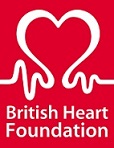Epidemiology
This study1 reports data from England as a baseline for future reference, summarising patient characteristics, processes and outcomes for OHCA. It explored determinant pre-intervention factors of ROSC at hospital transfer and survival to hospital discharge from OHCA in UK, and assess their prediction of survival outcomes.
This is a prospective observational study from the OHCAO registry. The incidence, demographic and outcomes of patients who were treated for an OHCA between 1st January, 2014 and 31st December 2014 in 10 English ambulance service (EMS) regions are reported in accordance with Utstein recommendations.
28,729 OHCA cases of EMS treated cardiac arrests were reported (53 per 100,000 of resident population). The mean age was 68.6 (SD=19.6) years and 41.3% were female. 83% occurred in a place of residence, 52.7% were witnessed by either the EMS or a bystander. In non-EMS witnessed cases, 55.2% received bystander CPR whilst public access defibrillation was used rarely (2.3%). Cardiac aetiology was the leading cause of cardiac arrest (60.9%). The initial rhythm was asystole in 42.4% of all cases and was shockable (VF or VT) in 20.6%. Return of spontaneous circulation at hospital transfer was evident in 25.8% (n= 6302) and survival to hospital discharge was 7.9%.

Cardiac arrest is an important cause of death in England. With less than one in ten patients surviving, there is scope to improve outcomes. Survival rates were highest amongst those who received bystander CPR and public access defibrillation.
1 Hawkes C,, et al., (2017). Epidemiology and outcomes from out-of-hospital cardiac arrests in England. Resuscitation, 110, 133-140.

Project Overview
Information for Health Professionals
Information for the public
Publications
Interactive Map
Search the OHCAO website:
Enquiries:
Tel: 02476 572725
Email: ohcao@warwick.ac.uk
Address:
Warwick Clinical Trials Unit
Warwick Medical School
University of Warwick
Gibbet Hill Road
Coventry
CV4 7AL


